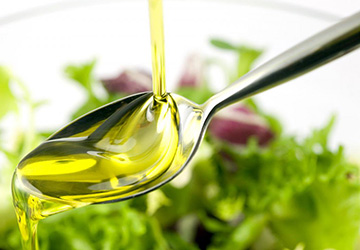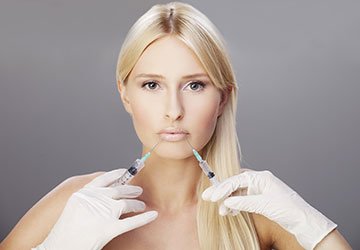Cosmetics and makeup
Omega 3 fatty acids in products on our table
Fatty acid they are not produced by the body, but they are necessary for us, since an important function of the body - the metabolic process - depends on them. With a lack of these acids, premature aging of the body begins, bone tissue is disturbed, and diseases of the skin, liver and kidneys occur. These acids enter the body with food and are an important source of energy for any organism. Therefore, they are called irreplaceable (ELC). The amount of essential fatty acids (EFAs) in our body depends on how much fat and oils we eat.
EFAs occupy a large part of the protective shell or membrane that surrounds any cell in the body. They are used to form fat, which covers and protects internal organs. When broken down, EFAs release energy. The fatty layers under the skin soften the impact.
Saturated fatty acids - some fatty acids are "saturated", i.e. saturated with as many hydrogen atoms as they can attach. These fatty acids increase blood cholesterol levels. Fats containing them remain solid at room temperature (for example, beef tallow, rendered lard, and butter).
Solid fats contain a lot of stearic acid, which is found in large quantities in beef and pork.
Palmitic acid also saturated acid, but it is found in tropical plant oils - coconut and palm. Although these oils are plant-based, they contain a lot of saturated acids that are unhealthy.
We need to reduce all saturated fat in our diets. They narrow the arteries and disrupt normal hormonal activity.
Health largely depends on the state of the blood vessels. If the vessels are clogged, sad consequences are possible. In atherosclerosis, the walls of the vessels are very ineffectively restored by the body itself, fatty plaques appear - the vessels are clogged. This situation is dangerous for the body - if the vessels through which blood flows to the heart are clogged, a heart attack is possible, if the vessels of the brain are clogged - a stroke. What to do so that the vessels are not clogged.
Polyunsaturated fatty acids (PUFA) - fatty acids containing two or more double bonds, with a total carbon number of 18 to 24. They reduce the amount of cholesterol in the blood, but can worsen the ratio of HDL to LDL.
HDL - high density lipoproteins
LDL - low density lipoprotein
HDL is a high-density lipoprotein, a fat-like substance in the blood that helps prevent the buildup of cholesterol on the walls of arteries.
LDL is a low-density lipoprotein, a type of fat-like substance in the blood that carries plaques of cholesterol in the bloodstream. An excess of this substance can lead to cholesterol deposits on the inner walls of the arteries.
The normal ratio of LDL to HDL is 5: 1. In this case, HDL should work well to rid the body of cholesterol. Too much polyunsaturated fat can upset this imbalance. The more we consume polyunsaturated fats, the more we need to introduce vitamin E into the diet, since in the cells of our body vitamin E acts as an antioxidant and protects these fats from oxidation.
Initially, only linoleic acid was referred to as essential polyunsaturated fatty acids, and now also arachidonic acid.
Polyunsaturated fatty acids are components of many cellular structures of the body, primarily membranes. Membranes are viscous yet plastic structures that surround all living cells. The absence of any membrane component leads to various diseases.
Deficiency of these acids is associated with the development of such diseases as cystic fibrosis, various diseases of the skin, liver, atherosclerosis, ischemic heart disease, myocardial infarction, vascular thrombosis and their increased fragility, strokes. The functional role of polyunsaturated fatty acids consists in the normalization of the activity of all membrane structures of cells and intracellular transmission of information.
Linoleic acid is found in the highest concentration in flax, soybeans, walnuts, and is a part of many vegetable oils and animal fats. Safflower oil is the richest source of linoleic acid. Linoleic acid helps relax blood vessels, reduces inflammation, relieves pain, promotes healing, and improves blood flow. Signs of a lack of linoleic acid are diseases of the skin, liver, hair loss, nervous system disorders, heart disease and growth retardation. In the body, linoleic acid can be converted to gamma-linoleic acid (GLA), which occurs naturally in breast milk, evening primrose and borage (borage) oil, or cinquefoil and black currant seed oil. Gamma-linoleic acid has been found to help with allergic eczema and severe chest pain. Evening primrose oil and other GLA-rich oils are used to treat dry skin and keep the fat membranes around skin cells healthy.
Eating foods that are low in fat or contain no sources of linoleic acid can cause serious health problems.
Arachidonic acid promotes the work of the brain, heart, nervous system, if it is deficient, the body is defenseless against any infection or disease, arterial pressure, imbalance in hormone production, instability of mood, leaching of calcium from bones into the blood, slow healing of wounds. It is found in lard, butter, and fish oil. Vegetable oils do not contain arachidonic acid, its insignificant amount is in animal fat. The richest in arachidonic acid are fish oil 1-4% (cod), as well as the adrenal glands, pancreas and mammalian brain. What is the functional role of this acid? In addition to normalizing the activity of all membrane structures of cells, arachidonic acid is a precursor of important bioregulators formed from it - eicosanoids. "Eicosa" - number 20 - there are so many carbon atoms in molecules. These bioregulators are involved in various blood reactions, affect the state of blood vessels, regulate intercellular interactions, and perform a number of other important functions in the body.
The average daily requirement for polyunsaturated fatty acids is 5-6g. This need can be met by the use of vegetable oil 30g per day. Based on the available food sources, arachidonic acid is the most scarce.
Therefore, in order to prevent and treat some diseases associated with a deficiency of these acids, several effective drugs based on natural raw materials have been developed.
Monounsaturated fatty acids - fatty acids containing one double bond. They act to lower blood cholesterol levels and help maintain the proper ratio between HDL and LDL.
The most important monounsaturated fatty acid for our diet is oleic acid. It is present in the cell membranes of plants and animals and contributes to the elasticity of the arteries and skin.
Oleic acid plays an important role in lowering cholesterol levels, strengthens the immune system, and prevents the appearance of tumors. A particularly high concentration of this acid is in cold-pressed olive oil, sesame oil, almonds, peanuts, walnuts.
Monounsaturated fats are stable at high temperatures (hence olive oil is very suitable for frying), and they do not upset the balance of LDL and HDL in the way that polyunsaturated fats can.
In the Mediterranean countries, where large quantities of olive oil, olives and olives, avocados and nuts are consumed, cases of coronary heart disease and cancer are much less common. This is largely attributed to the monounsaturated fats present in all of these foods.
From all that has been said, it can be concluded that it is possible to influence the course of certain diseases with the help of not only drugs, but also special diets.
And these two videos will tell you how to cook salmon rolls.
Send to freezer
Comments and Reviews
Add a comment
Rating news
Shades of clothing that make women look younger
What shades of hair make women younger: rules and photos
Funny wedding dresses - photos and ideas
12 most expensive down jackets for the winter
How to look 25 at 40: tips from supermodels
Beautiful schoolgirls
Anti-aging haircuts and hairstyles for women
Fashionable skirts for autumn and winter
Fashionable women's trousers for the cold season
Fashionable and stylish sandals for summer 2024
Spring-summer 2024
 Fashionable dresses and tops with thin spaghetti straps
Fashionable dresses and tops with thin spaghetti straps
 Bandana tops: how to wear stylishly and beautifully
Bandana tops: how to wear stylishly and beautifully
 How to put together the perfect men's wardrobe for the summer
How to put together the perfect men's wardrobe for the summer
 Fashionable shorts for spring-summer 2024
Fashionable shorts for spring-summer 2024
 Fashionable skirts for spring-summer 2024: a guide to online shopping
Fashionable skirts for spring-summer 2024: a guide to online shopping
 The most fashionable dresses spring-summer 2024: styles and colors
The most fashionable dresses spring-summer 2024: styles and colors
 Fashionable total look 2024: ideas of images and trends
Fashionable total look 2024: ideas of images and trends





